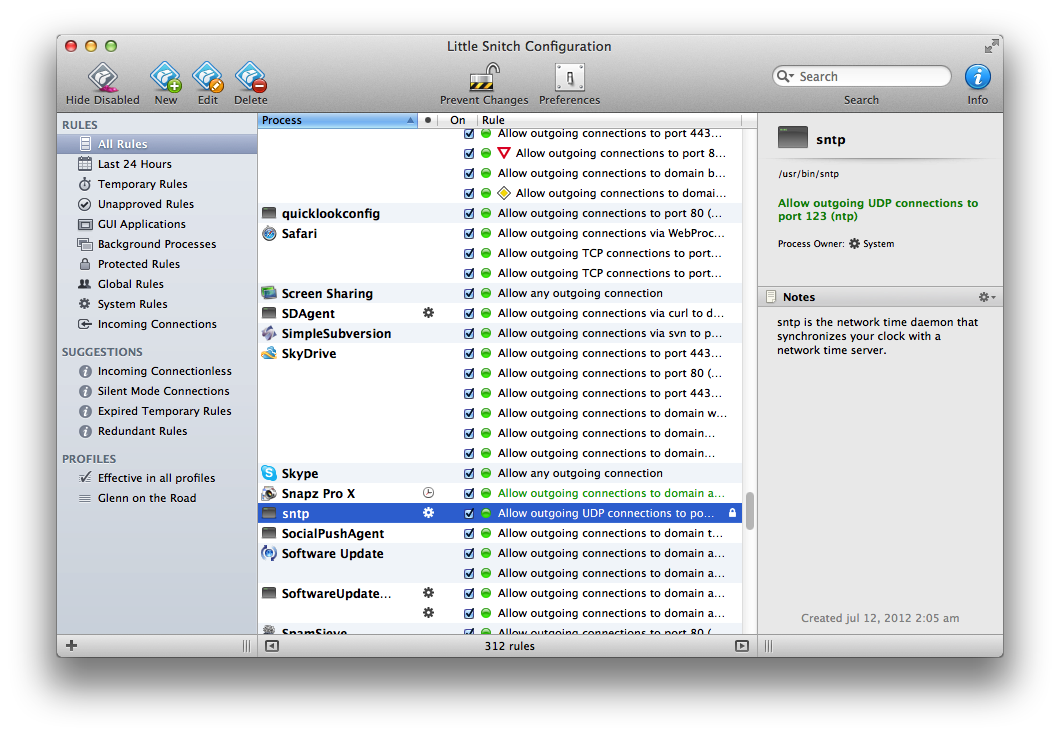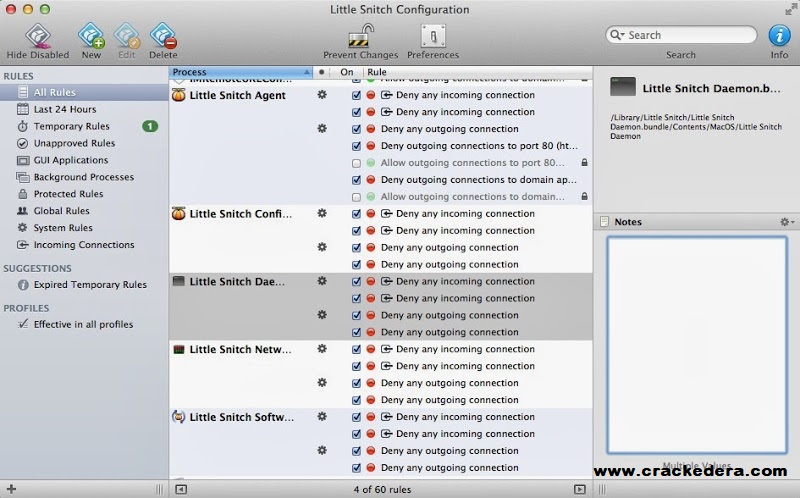Little Snitch Unapproved Rules
When you start using Little Snitch, you need to decide for every Internet connection whether to allow or deny it. That’s a lot of work and you may wish to copy a sane set of rules from somebody you trust.
- Little Snitch Unapproved Rules Pdf
- Little Snitch Unapproved Rules Book
- Little Snitch Unapproved Rules Pdf
- Little Snitch Unapproved Rules List
That’s exactly what rule groups are made for. Little Snitch ships with a few built-in rule groups. But you can also subscribe to rule groups published by somebody else. Cthulhu vst free.
Rule groups that ship with Little Snitch
Little Snitch currently ships with two built-in rule groups:

macOS Services: The rules in this group basically allow all connections to the domain
apple.comfor all processes. This includes usage statistics collected by Apple, location services, crash reports and so on. Enable this rule group if you trust Apple and if you don’t want to decide these things one-by-one.- iCloud Services: The rules in this group allow all connections to iCloud for all processes. Enable this rule group if you want to use iCloud services built into macOS and third-party apps.
What is more, Little Snitch features a flexible temporary rule system that offers a number of options for rules that are effective only for a limited period of time. Furthermore, Little Snitch automatically analyzes your ruleset and indicates the presence of overlapping, redundant or invalid rules that you might want to delete. You can also search for a specific position of any domain by the Little Snitch Crack Quick filters option. Little Snitch 4.4.3 Crack License key Generator For Mac. This is an application that screens and deal with all approaching an active association in Mac OS X and furthermore in your Windows. And in addition, Little Snitch Keygen is a.
After the first installation, Little Snitch shows a Welcome Window asking you which of these rule groups you want to enable. You can re-play this Welcome Window by choosing Help > Welcome to Little Snitch in Little Snitch Configuration.
You can enable or disable rule groups at any time. Open Little Snitch Configuration and have a look at the Rule Groups section in the left sidebar.
Rule group subscriptions
In addition to the built-in groups you can subscribe to third-party rule groups, that are published and maintained by somebody else.
The rules in these groups are global by design, so any changes you make to them (subscribe, unsubscribe, activate, deactivate, etc.) will affect all users on the computer and therefore require the Allow Global Rule Editing option to be turned on in Preferences > Security. Otherwise you will have to enter an administrator password whenever you make changes to a rule group subscription. Read the chapter Anatomy of a rule, section Process owner for more information.
Was this help page useful? Send feedback.
© 2016-2020 by Objective Development Software GmbH
This feature is available starting with Little Snitch 4.1
Rule groups are sets of rules that anyone can create and publish on their web server for others to subscribe to. Whenever changes to the rules are made by the publisher, subscribers receive these changes.
This is useful for providing automatically updating block lists, distributing rules on multiple computers, or for app developers who want to provide a set of rules to their customers to make it work seamlessly with Little Snitch.
If you want to try out a sample rule group subscription, we are hosting an example blocklist that you can subscribe to.
Limitations of rule group subscriptions
- Global: Rules from a subscription are global by design, so any changes you make to them (subscribe, unsubscribe, activate, deactivate, etc.) will affect all users on the computer and therefore require the Allow Global Rule Editing option to be turned on in Preferences > Security. Otherwise you will have to enter an administrator password whenever you make changes to a rule group subscription.
- Protected: Because rules from a subscription are maintained by someone else and are updated via the Internet, they are protected and cannot be edited by subscribers. However, these rules can be disabled, either individually or all at once by disabling the entire group.
- Effective in all profiles: Rules from a subscription are always effective in all profiles (unless they are disabled). They cannot be added to individual profiles.
- HTTPS: For security reasons, Little Snitch requires that rule groups are published via HTTPS. Unencrypted HTTP connections are not supported.
Subscribing to rule groups
Only subscribe to rule groups published by someone you trust. The publisher can add new rules or remove existing rules and these changes will affect what connections are allowed or denied on your computer.
To subscribe to a rule group that someone else has published, open Little Snitch Configuration and choose File > New Rule Group Subscription. In the dialog, enter the URL of the rule group. Only HTTPS URLs are supported.
Rule groups can contain rules with any action, e.g. allow, deny, or ask. By default, rules that allow connections are added as disabled rules until you review them and enable them yourself. This is to make sure that no rules that allow connections are added without your consent. If you do not want this additional protection, you can uncheck “Disable new allow rules”.
You can choose the update interval at which Little Snitch will connect to the publisher’s server and check for updates to the rule group.
Whenever new rules are added or existing rules are modified in an update in a way that affects what connections it allows or denies, Little Snitch will show a notification in the top-right corner of the screen and mark these rules as unapproved for you to review.
Editing rule group subscriptions
After subscribing to a rule group, the group is shown in the Rule Groups section in the left sidebar of Little Snitch Configuration. By double-clicking the group, you can view and edit settings and change the group’s name.
You can enable or disable individual rules in a rule group by clicking the checkboxes in the list. You can also enable and disable a whole group using the checkbox next to the group name in the left sidebar.

The rules themslelves cannot be edited, though, as indicated by the lock symbol to the right of the rules. However, you can disable them and then add a copy to your ruleset by duplicating it. This copy can then be edited like any other rule you created. Note that any updates to that rule made by the publisher of the rule group will not affect the copy you created.
Unsubscribing from a rule group
Unsubscribing from rule groups will stop checking for updates and will also delete the rules in that group from your ruleset. If you want to keep some or all of the rules, you can duplicate them before unsubscribing, as described above.
To unsubscribe, right-click on the rule group in the left sidebar and choose Unsubscribe from the menu.
Publishing rule groups
This section is for advanced users who want to create a rule group that others can subscribe to and receive updates for any changes.
To publish a rule group you need two things: First, the rules you want to publish in a .lsrules file. Second, a web server that is accessible via HTTPS.
As a publisher of a rule group, keep a few things in mind:
- Provide a meaningful description to your rule group. Subscribers have to trust you to only add rules that match what the description says.
- Subscribers may choose to disable automatic updates for your rule groups. Don’t expect that modifications you make are guaranteed to reach all subscribers.
- By default, subscribers will need to manually enable allow rules you add.
Creating a rule group file
The easiest way to create a rule group file is by selecting the rules to publish in Little Snitch Configuration and choosing File > Export Selected Rules….
Little Snitch Unapproved Rules Pdf
Alternatively, you can create the .lsrules file using a text editor or a script. The latter option allows you to dynamically create the JSON depending on parameters passed in the URL used for subscribing. The chapter The .lsrules file format specifies the JSON structure that Little Snitch expects for subscribing to rule groups.
Mar 31, 2020 Make a delicious pizza, bake it in the oven and have a lot of fun slicing it! Create your own delicious pizza and make this a mouth-watering experience. Unleash your creativity - choose from a huge selection of ingredients and create the kind of pizza you like. When the pizza looks just the way you want, it’s time to bake it. Put it in the oven and watch it as the crust becomes brown, see. Hey boys and girls, Pizza maker is a cooking games for girls and kids. It is one of the top free games in App market.Download it and setup it to your mobile device, you can Become a chef,. Nov 22, 2017 How to play Pizza Maker - Cooking Games: ♥ Download the game ♥ Choose the building you want to visit (Kitchen, Supermarket, Cooking Academy) ♥ Each building is a mini game that helps a player collect stars, 1 000 stars are needed to become a master chef ♥ After finishing each game, a. Pizza maker - cooking game. Pizza maker cooking game free download - pizza maker - cooking games, Pizza Maker Chef Cooking Games, Master Pizza Maker - cooking game, and many more programs.
Providing a URL
Little Snitch Unapproved Rules Book
Please refer to your web server’s documentation on how to serve a static file or how to run a script to dynamically create responses to incoming requests.
Little Snitch Unapproved Rules Pdf
Regardless of how you serve the rule group, you will want to send the URL to others for subscribing. For convenience, you can provide an x-littlesnitch: URL on a website that users of Little Snitch can click to automatically open Little Snitch Configuration with the URL filled in already. Because you’ll pass a URL as a parameter in an x-littlesnitch:subscribe-rules?url= URL, you will need to percent encode your URL.
For example:
URL to .lsrules file | x-littlesnitch: URL |
|---|---|
| https://example.com/SomeRules.lsrules | x-littlesnitch:subscribe-rules?url=https%3A%2F%2Fexample.com%2FSomeRules.lsrules |
| https://example.com/SomeRules.lsrules?foo=bar | x-littlesnitch:subscribe-rules?url=https%3A%2F%2Fexample.com%2FSomeRules.lsrules%3Ffoo%3Dbar |
Little Snitch Unapproved Rules List
Was this help page useful? Send feedback.
© 2016-2020 by Objective Development Software GmbH